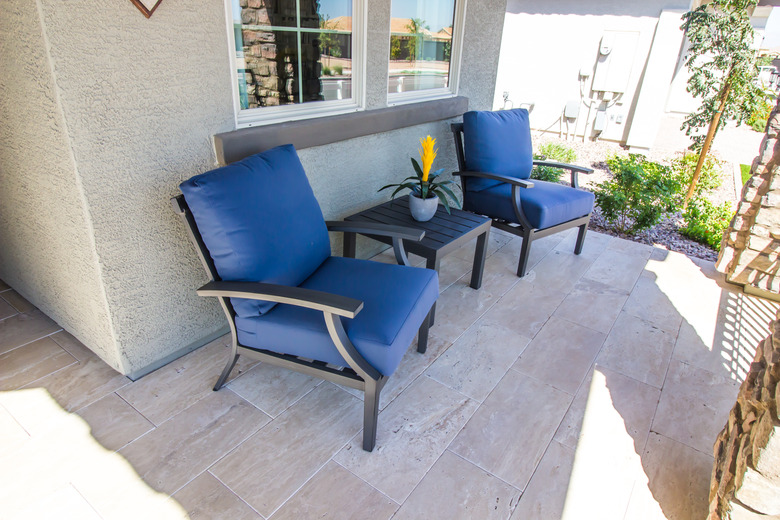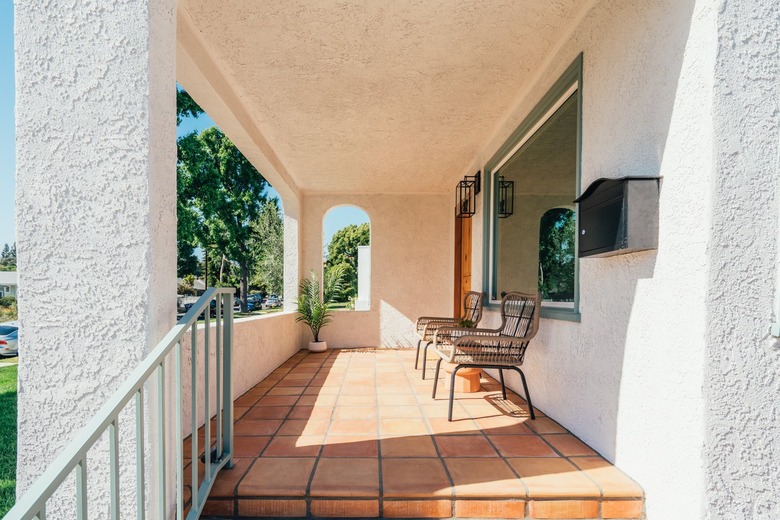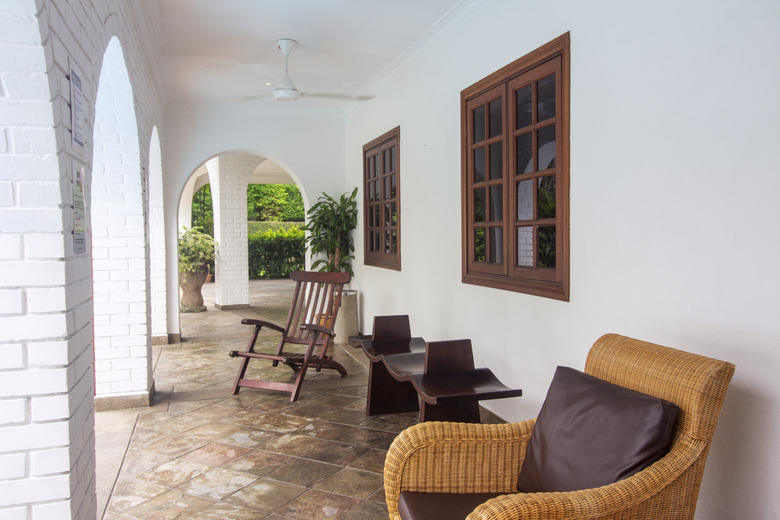Can You Use Peel-And-Stick Tiles For Outdoor Spaces?
We may receive a commission on purchases made from links.
Peel and stick tiles are affordable and renter-friendly without sacrificing style, making them great for decorating both your indoor — and even outdoor — spaces. A less permanent alternative to traditional tile, peel and stick tiles are a great way to add color and texture to your space. Plus, decorating with peel and stick tiles will save you valuable time on installation.
Usually made from vinyl, peel and stick tiles have a self-adhesive backing that sticks to smooth, flat surfaces. That means you don't need to use mortar or grout to install them, but it also means they're less durable than ceramic, porcelain, or stone tiles. If you use peel and stick tiles outdoors, make sure to protect them from the elements as much as possible. Peel and stick tiles made from vinyl are waterproof, but can get damaged if water is left on them.
Use Peel and Stick Tiles on Outdoor Flooring
Use Peel and Stick Tiles on Outdoor Flooring
Outdoor spaces that are protected from the elements are the perfect places to install peel and stick tiles. Install them on smooth, dry subfloors made of concrete or hardwood for long-lasting results. Peel and stick tiles are suitable for outdoor flooring in spaces including:
- Sun rooms
- Covered porches
- Sheds
- Screened-in patios
Tips for Applying Outdoor Peel and Stick Tiles
Tips for Applying Outdoor Peel and Stick Tiles
While you can certainly use peel and stick tiles outdoors, there are a few things to keep in mind:
1. Make Sure the Space is Covered
Rainy weather can expose your outdoor space to moisture, which wears down the sticky adhesive on peel and stick tiles. With enough moisture, they can completely unstick from the floor. That's why it's important to ensure your porch floor is completely covered and protected from rain.
2. Place Tiles on Dry, Even Surfaces
Avoid placing the tiles over splintered wood and other uneven surfaces. Uneven surfaces will prevent the material from cleanly adhering to it, meaning the final result will look wonky and may not last long.
Only place peel and stick tiles on dry surfaces. Placing them on damp cement surfaces can cause the tiles to pull away and loosen.
3. Use Peel and Stick Tiles to Hide Blemishes
Another advantage of using peel and stick tiles particularly in your outdoor shed is that they hide oil stains, dirt spots, and grass stains that often appear on shed floors from shuffling around yard equipment, like lawn mowers. They also brighten up what would otherwise be a completely utilitarian space.
If you decide to install peel and stick tiles in your shed, consider choosing ones with neutral earth tones and simple patterns to blend in with outdoor elements. Darker neutrals will also help hide blemishes that appear on the floor.
4. Choose Colorful Peel and Stick Tiles for Porches and Patios
Adding peel and stick tiles to your outdoor space is an easy way to liven it up. Whether you use bright, patterned tiles or more muted ones, applying peel and stick tiles outdoors will look wonderful. The best part is that peel and stick tiles are easy to install and completely removable, so if you're not a fan of the color you initially chose, you can easily change things up.


